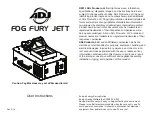
18
Presser Foot Pressure
The presser foot pressure has been pre-set to
WKHVWDQGDUGYDOXH´µ,QPRVWFDVHV\RXGR
not need to adjust the presser foot pressure.
)RU VSHFLDOW\ WHFKQLTXHV RU ZKHQ VHZLQJ RQ
very light or heavy fabric, adjusting the pres-
sure can improve the result.
For very light fabrics, loosen the pressure by
turning the dial counterclockwise.
Note: If the dial is turned counterclockwise too
much, it could come off. If this happens, simply re-
place the dial and turn it clockwise until it stays in
place.
For heavy fabric, tighten the pressure by turn-
ing the dial clockwise.
Note: If the dial is turned clockwise until it comes
to a stop, it has reached the maximum pressure
available. Do not try to turn the dial any further!
Thread Tension
To set the thread tension, turn the dial on top
of the machine. Depending on the fabric, bat-
ting, thread, etc, the tension may need to be
adjusted.
For the best stitch appearance and durability,
make sure the needle thread tension is correctly
adjusted. For general sewing, the threads
evenly meet between the two layers of fabric
$
If the bobbin thread is visible on the top side
of the fabric, the needle thread tension is too
WLJKW%5HGXFHWKHQHHGOHWKUHDGWHQVLRQ
If top thread is visible on the underside of the
fabric, the needle thread tension is too loose
&,QFUHDVHWKHQHHGOHWKUHDGWHQVLRQ
For decorative stitches and buttonholes, the
top thread should be visible on the underside
of the fabric.
Make a few tests on a scrap piece of the fabric
you are going to sew and check the tension.
Correct tension
Tension too tight
Tension too loose
B
A
C
















































